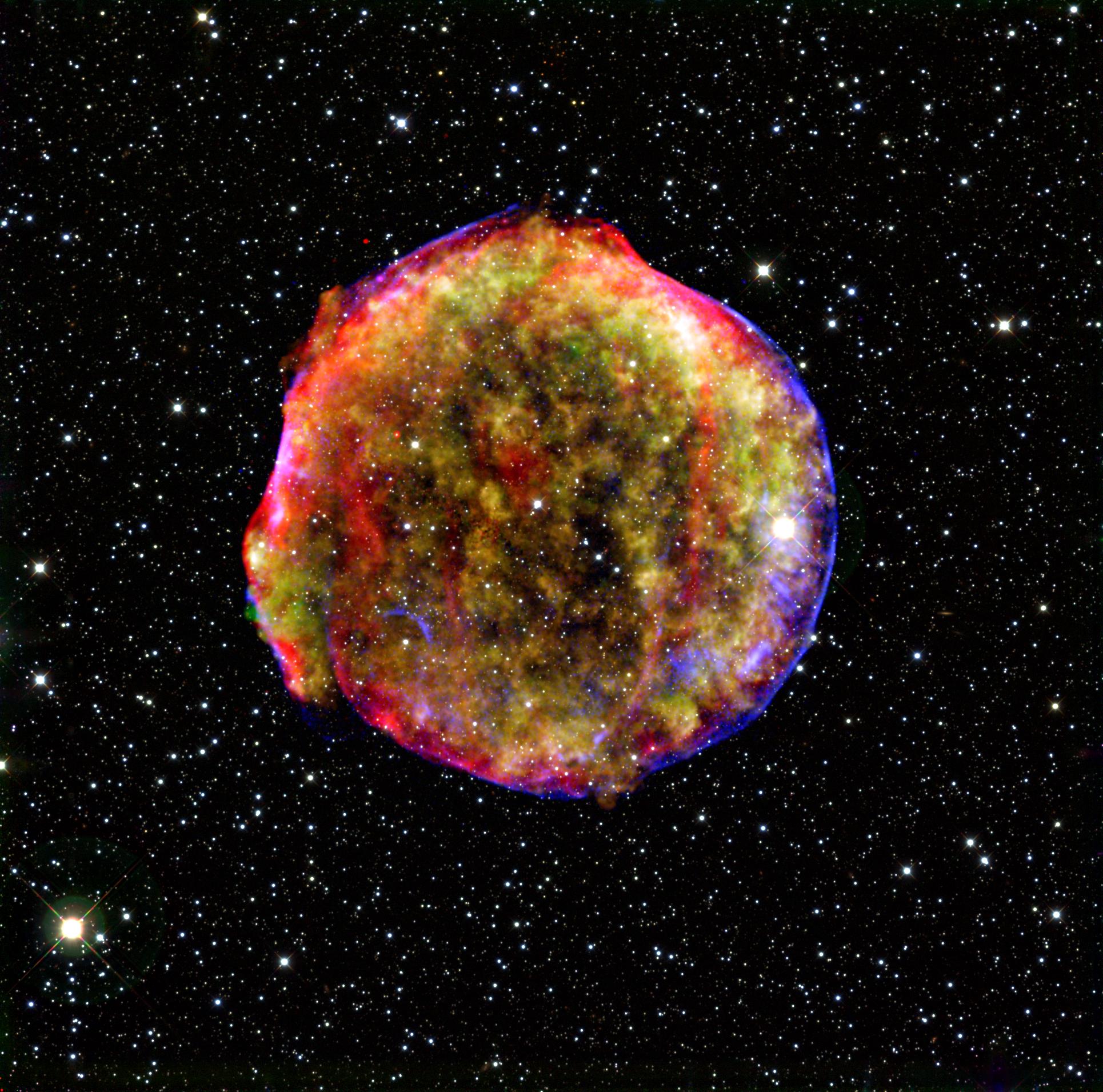
|
Supernova Remnants:
| Readings: Schneider & Arny: Unit 72 |
| (Audio Lecture) |
The most violent, and therefore hottest, ejection of gas into the interstellar medium is from supernova explosions. A supernova remnant (SNR) is the structure resulting from the gigantic explosion of a star in a supernova. The supernova remnant is bounded by an expanding shock wave, and consists of ejected material expanding from the explosion, and the interstellar material it sweeps up and shocks along the way. Many thin, arc-like nebula are found through out the Galaxy that are remnants of expanding shells of gas moving away from dead supernova at supersonic velocities. One such supernova remnant is the famous Tycho's Nova, observed in 1572.

In either case, the resulting supernova explosion expels much or all of the stellar material with velocities as much as 1% the speed of light, some 3,000 km/s. When this material collides with the surrounding circumstellar or interstellar gas, it forms a shock wave that can heat the gas up to temperatures as high as 10 million K, forming a plasma. A close-up example is the Cygnus Loop shown below.
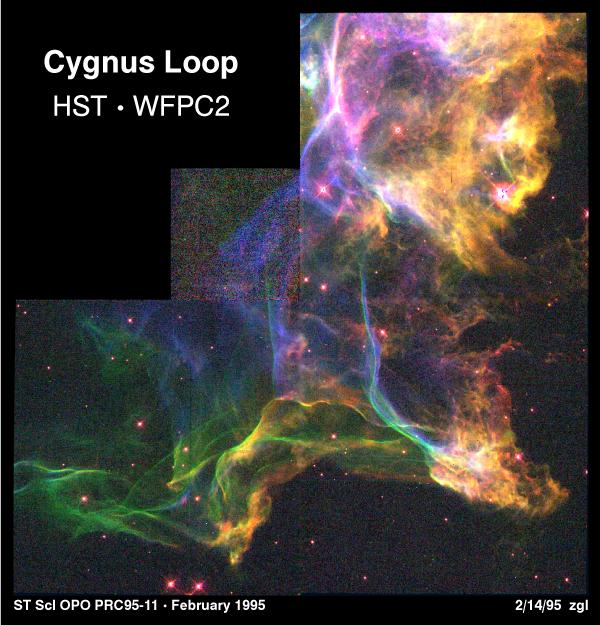
Supersonic motion is always accompanied by a shock wave that compresses the medium in front of it. This compression causes the gas to heat and glow. The most recent supernova near the Earth was in 1024 A.D. and its remnant is seen as the Crab Nebula shown below. In the center of the Crab Nebula is a fast rotating pulsar.

The shock wave from a supernova sweeps up matter in front of it and continues to heat this gas. Because supernova remnants are so hot, they emit a great deal of their energy in the x-ray region of the spectrum, shown in the x-ray picture of Cas A below.
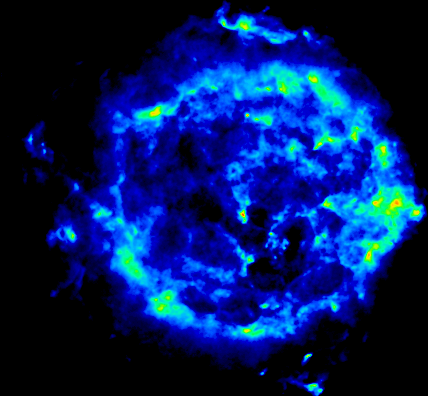
Notice that although the shock wave starts out as a symmetric explosion, the supernova remnant later develops structure and asymmetry. This is due to the fact that the density distribution of the interstellar medium is lumpy. The supernova remnant expands fastest in directions where the density is low. When pockets of dense gas are swept up, they radiate strongly and are visible as bright spots. So as a supernova remnant ages, it appears less round and regular.
As millions of years pass, the supernova remnant slows down and merges with the interstellar medium. All the heavy elements produced in the original supernova explosion are mixed into newly forming molecular clouds enhancing the number of heavy elements in future stars and solar systems.

A supernova remnant is a major source of energy for the interstellar medium. The region behind the shock wave is low in density, but very hot. Since its density is low, it cools at a very slow pace. The lumpy, foam-like nature to the interstellar medium is tracing the past history of supernovae. If the interstellar medium is dense, or the past supernova rate is small, then the interstellar medium has isolated bubbles of hot gas. If the interstellar medium is thin, or the supernova rate is high, then the interstellar medium becomes filled with connect bubbles or tunnels of hot gas.
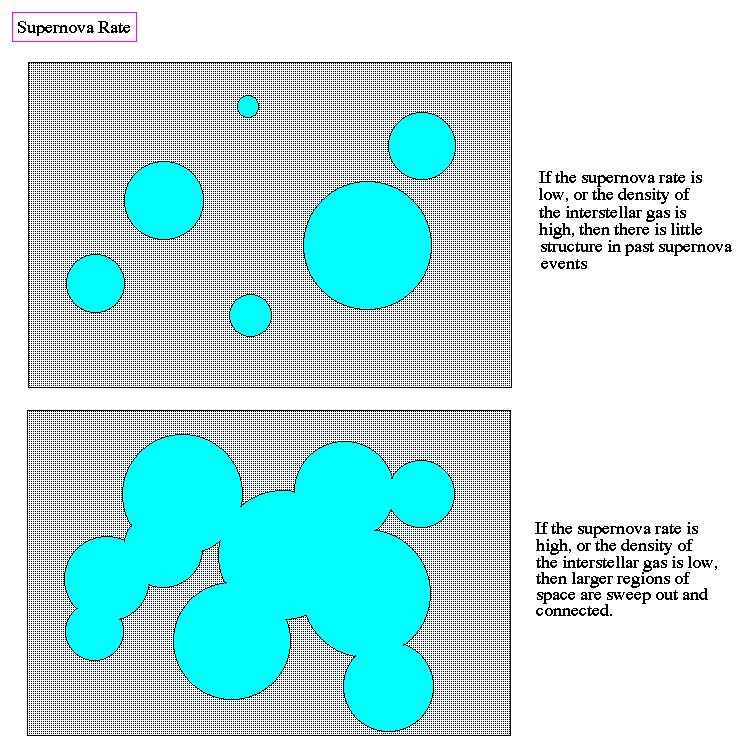
Cosmic Rays:
During both the day and night there is a continual shower of high speed particles into the Earth's atmosphere called cosmic rays. Most of these cosmic rays are protons and helium nuclei that have been accelerated to relativistic velocities (close to the speed of light). When cosmic rays collide with atoms in the Earth's atmosphere all their energy is converted back into matter (E=mc2) as a shower of particles that rains down to the Earth's surface.
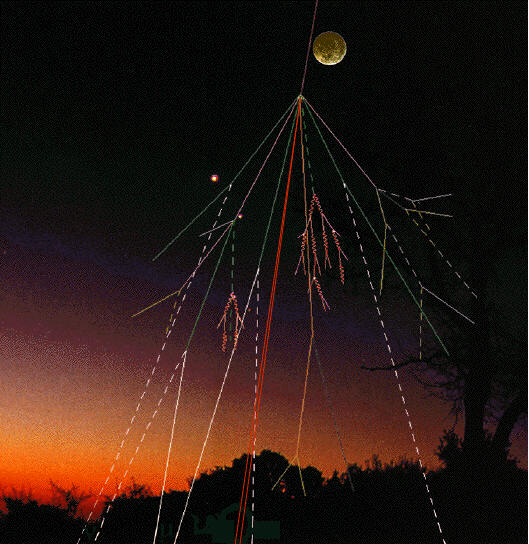
Supernova remnants are considered the major source of galactic cosmic rays. The connection between cosmic rays and supernovas was first suggested by Walter Baade and Fritz Zwicky in 1934. As cosmic rays move outward in all directions, most escape from the Galaxy. However, if the efficiency of cosmic ray acceleration in supernova remnants is about 10 percent, the cosmic ray losses of the Milky Way are compensated. This hypothesis is supported by a specific mechanism called "shock wave acceleration". Supernova remnants can provide the energetic shock fronts required to generate ultra-high energy cosmic rays.

Cosmic ray showers are usually discovered with a cosmic ray detector, a large array of simply mirrors and phototubes to catch the Cerenkov radiation from the incoming particles. These array of detectors have shown that the cosmic rays arrive to the Earth from isotropic directions, meaning that there is no particular source to be deduced from their collisions with the Earth's atmosphere. A lack of a preferred direction implies that cosmic rays are deflected by the Galaxy's magnetic field and, thus, lose their orientation after many deflections over time.
Cosmic rays strike all objects in outer space, not just the Earth. The image below is a picture of the Moon in gamma-rays, glowing from the impact of cosmic rays on it's surface (no atmosphere to block them).
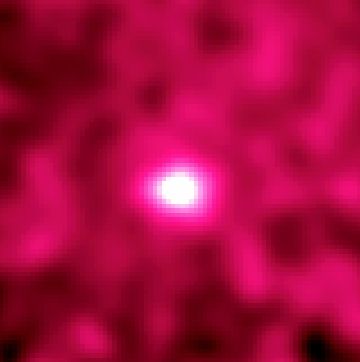
We can make some deductions about cosmic rays based on their frequency and energies. Since their energies and speeds are so high, they easily escape from the Galaxy's gravitational field. Since there are large numbers of cosmic rays seen everyday, this implies that they must be replenished at a steady rate. The only source in the Galaxy to produce particles at these energies are supernova explosions.
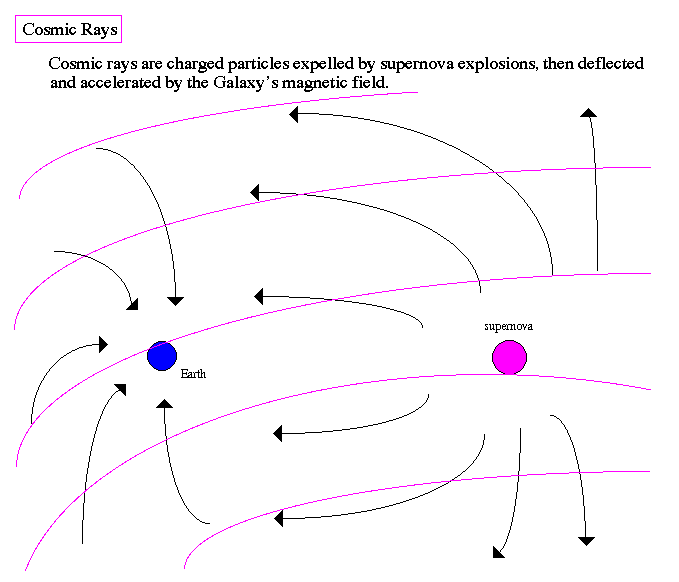

|
|

|